Sustainable Web Design 2025: SEO, UX, and Social Responsibility

Discover eco-friendly web design trends for 2025, how they improve SEO, UX, and help businesses fulfill their social responsibility. Learn about green hosting, image optimization, carbon footprint reduction, and more.
Sustainable Web Design Trends in 2025: Towards a Greener Future

In the face of increasingly urgent climate change, sustainable web design is no longer an option but a requirement. 2025 marks a significant turning point as businesses and web designers become more aware of their responsibility to the environment. Green web design, or sustainable web design, is not just about creating a beautiful website, but also about minimizing the negative impact on the environment by optimizing performance, reducing energy consumption, and promoting responsible business practices.
Green Web Design and its Impact on SEO
Sustainable web design has a direct impact on SEO, especially the following factors:
- Page Load Speed: A well-optimized website will load faster, improving user experience and increasing search engine rankings. Techniques such as image optimization, caching, and minimizing HTML, CSS, and JavaScript code can significantly improve page load speed.
- Image Optimization: Images often account for the majority of a website's size. Using modern image formats such as WebP and AVIF, along with effective image compression, can significantly reduce website size without reducing image quality.
- Mobile-First Index: Google prioritizes indexing websites that are designed to be mobile-friendly. Sustainable web design often includes optimizing the website for mobile devices, ensuring a good user experience on all devices.
User Experience (UX/UI) and Accessibility
Sustainable web design focuses not only on technical performance but also on user experience and accessibility. A well-designed website should be easy to use, easy to navigate, and accessible to all users, including those with disabilities.
- UX/UI: Minimalist design, intuitive interface, and readable content can significantly improve user experience. Using harmonious colors, readable fonts, and a clear layout can help users easily find the information they need.
- Accessibility: Ensuring that your website complies with accessibility standards (e.g., WCAG) is crucial to ensure that all users can access and use your website easily. This includes providing alternative text for images, using high-contrast colors, and providing keyboard navigation options.
Corporate Social Responsibility and Sustainable Web Design
Sustainable web design demonstrates a company's social responsibility towards the environment. Businesses can reduce their website's carbon footprint by using green hosting, optimizing code, and minimizing the amount of data transmitted.
- Green Hosting: Choosing a hosting provider that uses renewable energy is an effective way to reduce your website's carbon footprint. Green hosting providers often use data centers powered by solar, wind, or other renewable energy sources.
- Reduce Carbon Emissions: Optimizing code, minimizing the number of HTTP requests, and using caching can help reduce the amount of data transmitted and reduce your website's carbon footprint.
Specific Techniques for Sustainable Web Design
- Image Optimization (WebP, AVIF): Using modern image formats such as WebP and AVIF can significantly reduce image size without reducing quality.
- Use a CDN: A Content Delivery Network (CDN) can help distribute your website content from servers around the world, reducing page load times and reducing the load on the origin server.
- Choose Green Hosting: Select a hosting provider that uses renewable energy.
- Minimalist Design: Reducing the number of elements on your website can help reduce website size and improve page load speed.
- Measure and Reduce Carbon Emissions: Use tools to measure your website's carbon footprint and take steps to minimize it.
Case Study: Companies Successfully Implementing Sustainable Web Design
Many companies have successfully implemented sustainable web design and have seen significant benefits, including:
- Increased page load speed: Improved user experience and increased SEO rankings.
- Reduced hosting costs: Reduced data transmission and reduced server load.
- Enhanced brand reputation: Demonstrates corporate social responsibility and attracts environmentally conscious customers.
Practical Advice for Designers and Businesses
If you want to create an environmentally friendly website, consider the following tips:
- Start with a plan: Define your goals and create a specific plan to achieve them.
- Use tools to measure and track your progress: This will help you identify areas for improvement.
- Stay up-to-date with the latest trends in sustainable web design: Technology and best practices are constantly changing, so make sure you stay up-to-date with the latest information.
- Seek support from experts: If you're not sure where to start, seek support from sustainable web design experts. Some companies, like Vinawebapp.com – a professional website design company in Da Nang, Vietnam, can provide consulting and environmentally friendly web design services.
Conclusion: Sustainable Web Design – A Combination of Aesthetics, Functionality, and Responsibility
Sustainable web design is not just a trend but a change in mindset. It is a combination of aesthetics, functionality, and responsibility towards the environment. By applying sustainable web design techniques and methods, businesses and web designers can create websites that are not only beautiful and effective but also environmentally friendly, contributing to a greener future.

